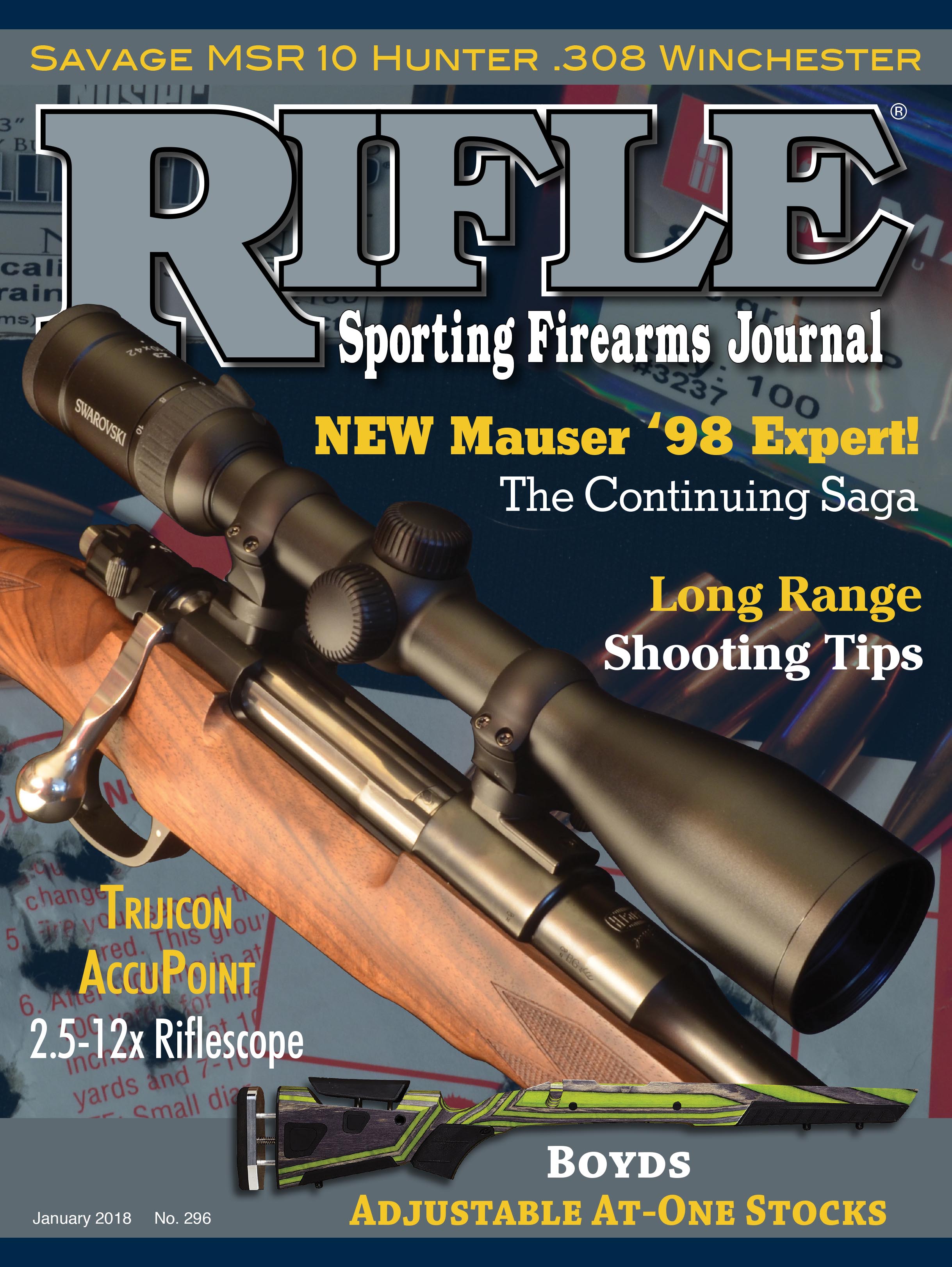Light Gunsmithing
Guard Screws and Hunting Rifles
column By: Gil Sengel | January, 18
Replacing parts is a familiar operation for anyone who enjoys old rifles. Firing pins and extractors are probably the most commonly encountered repairs. Many firing pins won’t stand much dry-firing before the tip breaks off or the pin becomes battered and deformed enough to no longer work freely in its recess, thus causing misfires. Extractor breakage is usually traced to handloads that are either too hot and stick in the chamber or have been improperly resized and stick tightly in the chamber before the bolt can close completely. Both situations lead to a broken extractor when attempting to extract the case/cartridge.
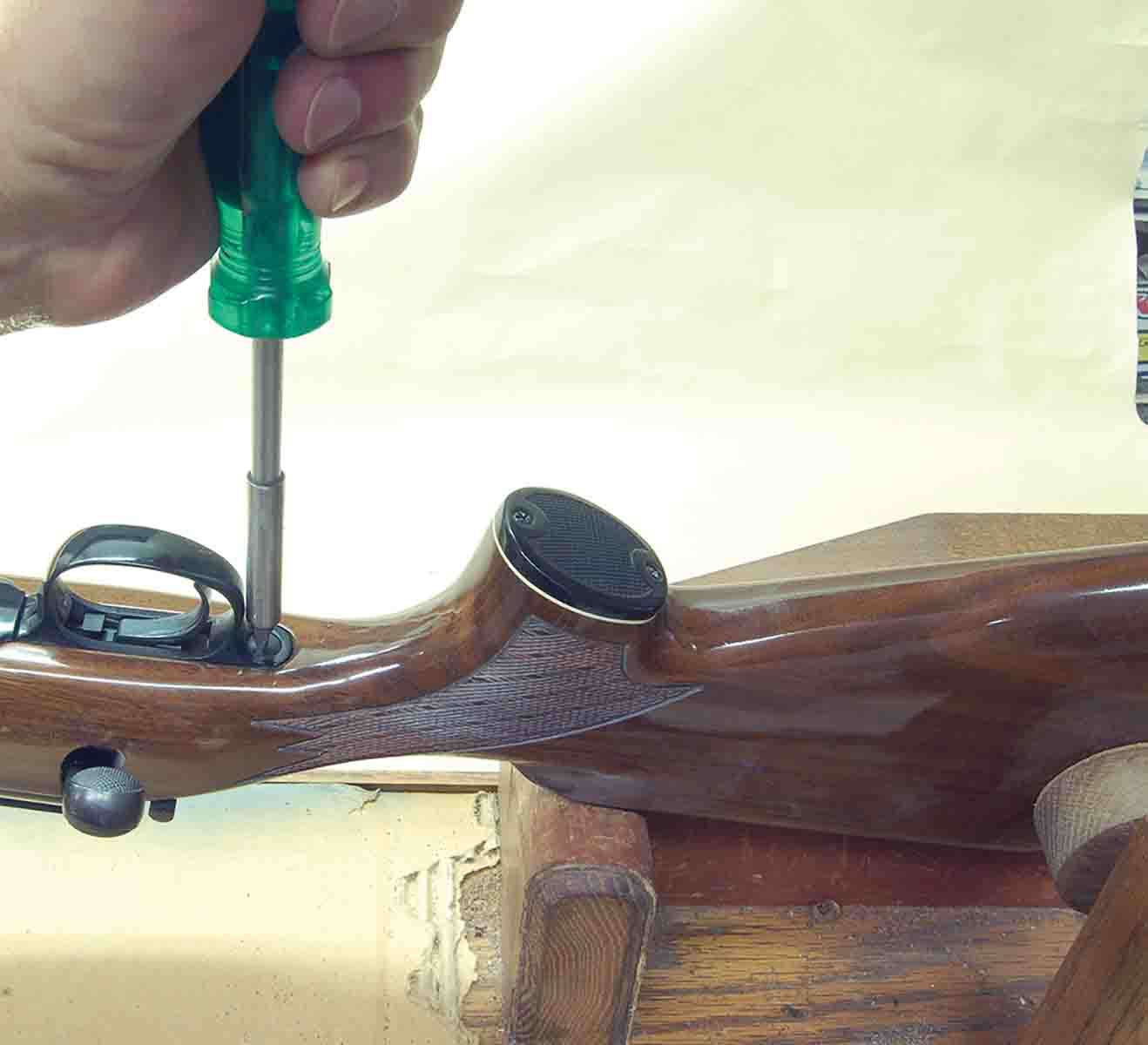
Then there are parts that aren’t broken but are changed on a whim. Stocks, barrels, triggers, scopes and mounts come to mind. But what about something that isn’t broken, defective or worn and adds nothing to appearance? This part is the common guard screw. Reasons for giving a bit of thought to replacing it, at least for some bolt guns, follow.
Guard screws are nothing more than slotted, fillister-head machine screws, most having a .250-inch diameter shank. All they do is clamp the trigger guard/floorplate assembly to the receiver, with the stock sandwiched in between. It would be impossible to break the shank or twist off the head in this application without damaging or destroying the bottom metal, and probably the stock as well. There is certainly no reason to do so.
The problem here is with the screws’ slotted head and the fact that guard screws are entirely different animals than the other screws used to assemble firearms. Everyone has been told these fasteners are supposed to be drawn up tightly – very tightly. For at least 100 years gun writers, gunsmithing books and shooters of various target games have preached that for best accuracy, the front guard screw must be turned in as tight as possible, or nearly so. The rear screw was then to be either the same or “very firm,” “nearly as much,” etc. – whatever all those somewhat less-than-scientific terms are supposed to mean.
One thing everyone does know, however, is that attempting to tighten a large slotted screw to this degree requires a large amount of downward force as well as torque. This is because the first time that screw was tightened the vertical sides of the slot were deformed, making them slightly tapered with the slot wider on top. The same applies to screwdrivers designed for such screws, even the so-called “hollow ground” or parallel-sided gunsmith type. Since the screwdriver is made of tough, heat-treated steel, it will be deformed little, but the screw a little more, each time assembly/disassembly takes place. After as few as eight to 10 cycles the screw slot may not look too bad, but it will be a bit wider at the top. A screwdriver can “walk” right up out of the slot when heavy torque is applied unless a lot of downward force is also exerted. If this downward force is not straight down, the screwdriver tip will slide sideways out of the slot, acting much like a dull wood chisel when it contacts stock wood (or stock plastic). Is this unimportant? Consider a couple stories I have heard.
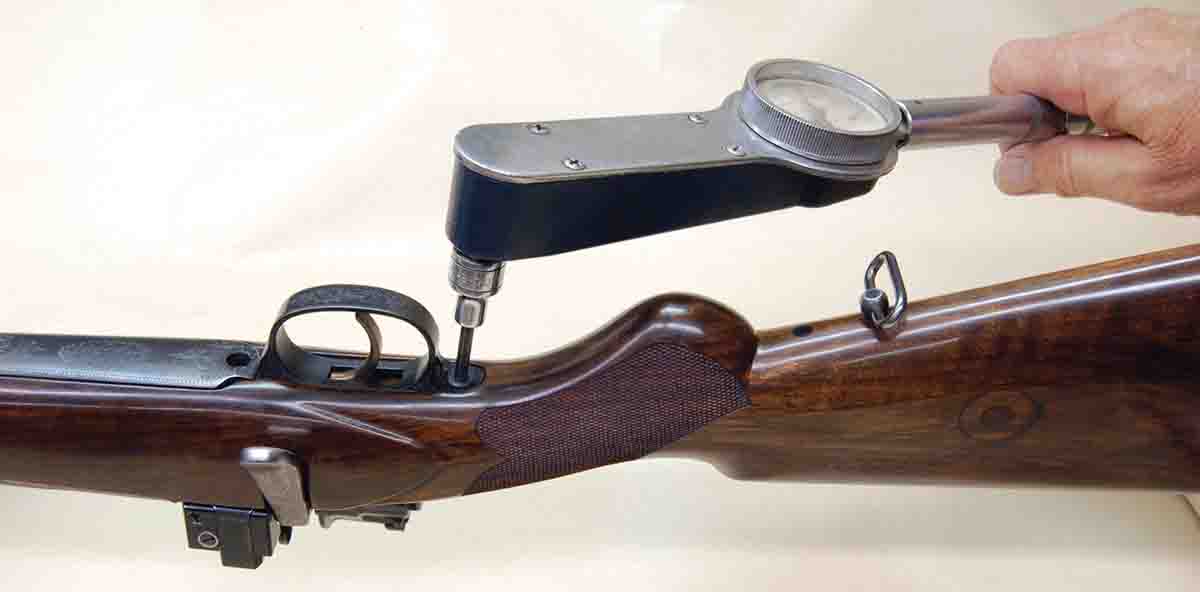
One example is a fellow whose cased rifle slid over the side of his boat. By the time it was found, the sun was going down, deer season opened the next morning and he was hours from home. With no screwdriver to remove the stock, the rifle was hung muzzle down in a tree overnight. When the stock was finally removed about a week later rust had destroyed the bluing underneath.
Another chap was caught in a frog-chokin’ thunderstorm on a mountain with no trees or other cover. Of course, there was no chance of rain that week, according to the weather report. His very expensive custom rifle got thoroughly soaked. However, proper tools were available to get it apart. Sitting in a camp chair with the rifle upside down and scope between his legs, the screwdriver slipped out of the guard screw slot and stabbed the owner in the thigh. Fortunately it was only an ugly flesh wound, but the location was just a couple inches south of being really serious.
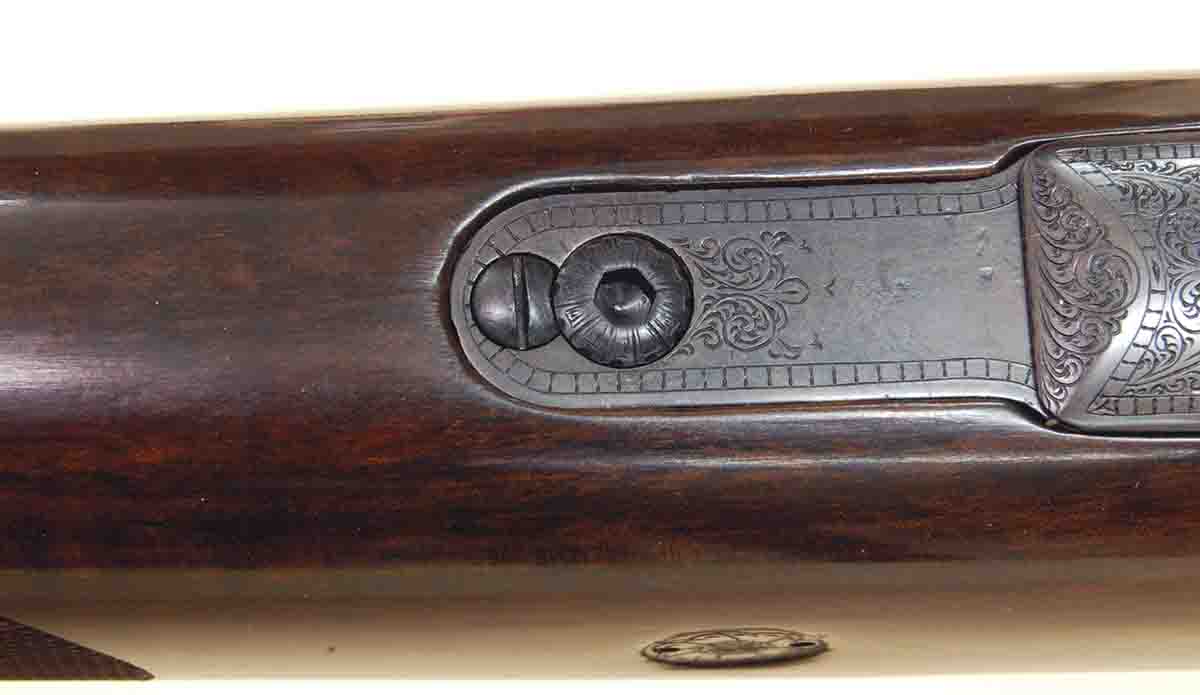
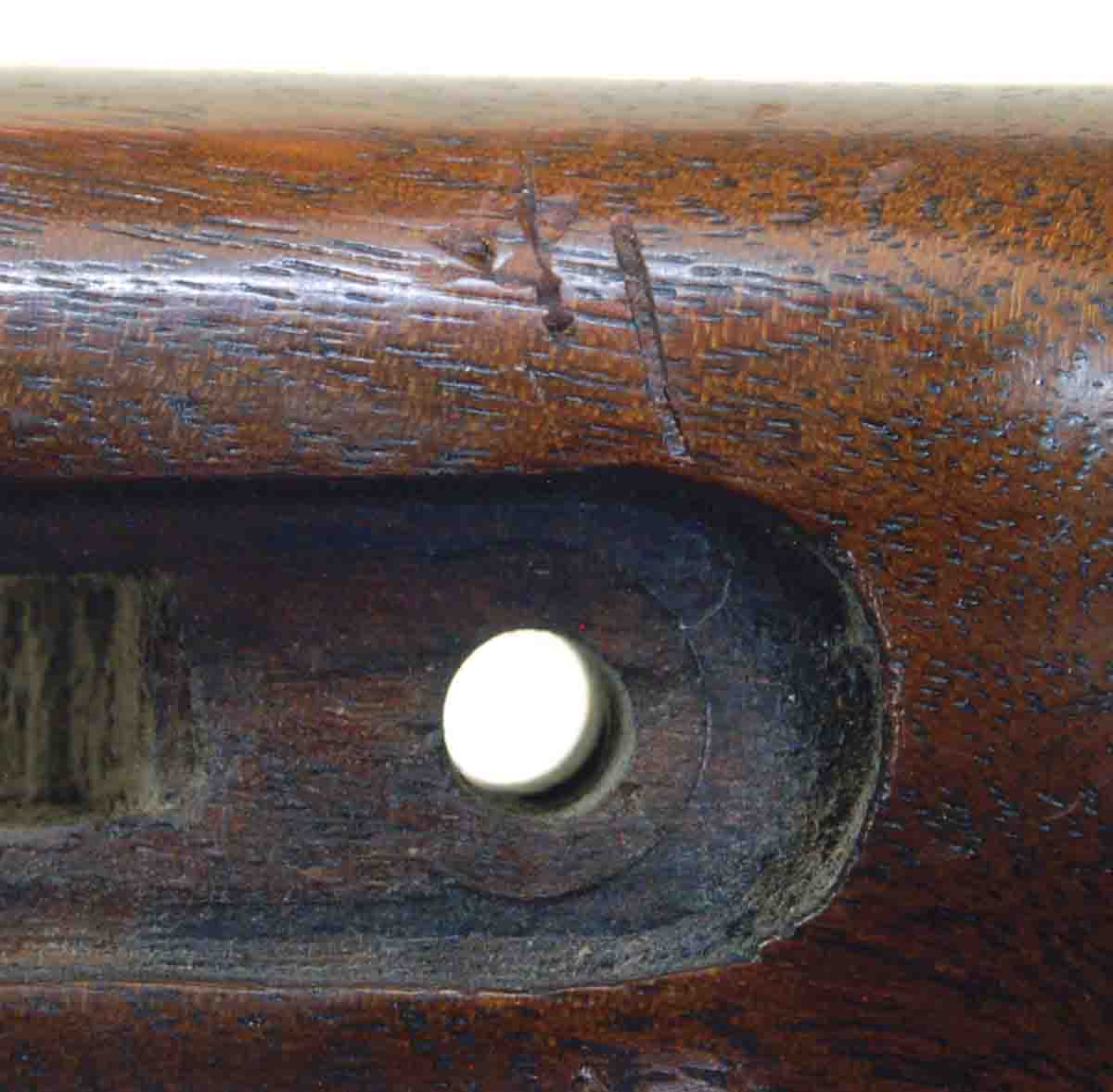
The point is that these things happen. They can also be easily prevented by simply replacing the guard screws with socket-head machine screws. These look just like a guard screw but instead of a cross-slot, the head contains a deep, six-sided hole. An L-shaped hex wrench, hex key or Allen wrench fits into the screw head. Its great advantage is that the wrench can’t climb out of the screw or slip and stab its owner. The screw can be tightened as much as desired, then loosened a thousand times without damage to the head (but not the little scope mount screws).
Why aren’t all guard screws made like this? Good question. No doubt the idea that if a bolt gun must be disassembled and no screwdriver is at hand, it would be easier to find a common driver that will work than a proper hex key. This is unfortunate thinking, however, as hex keys are cheap (less than $2) and available. Buy three or four; put one in with the jointed cleaning rod that goes on every hunt, maybe one in the field first aid kit and another in the truck toolbox so a key will always be available.
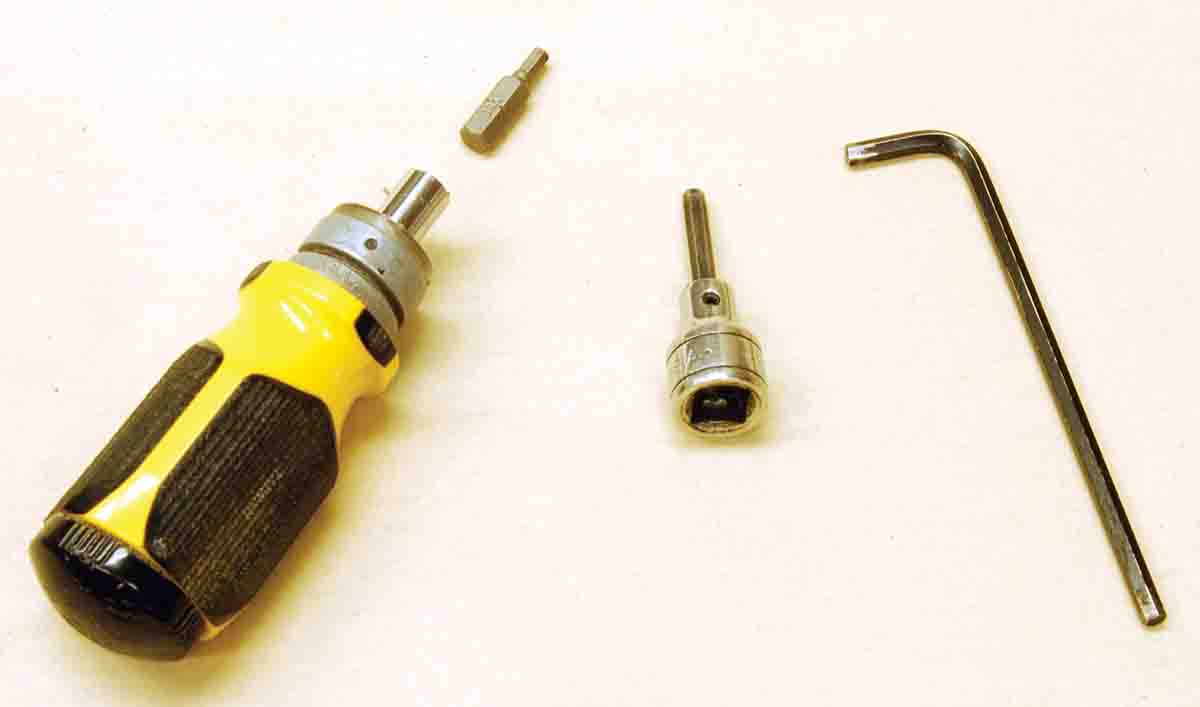
Please don’t misunderstand. I am not suggesting replacement of all bolt-action guard screws; however, those of favorite hunting rifles taken on several day hunts or expensive, guided affairs far from home, where unexpected exposure to water, mud or sand would put the piece out of action, should be considered.
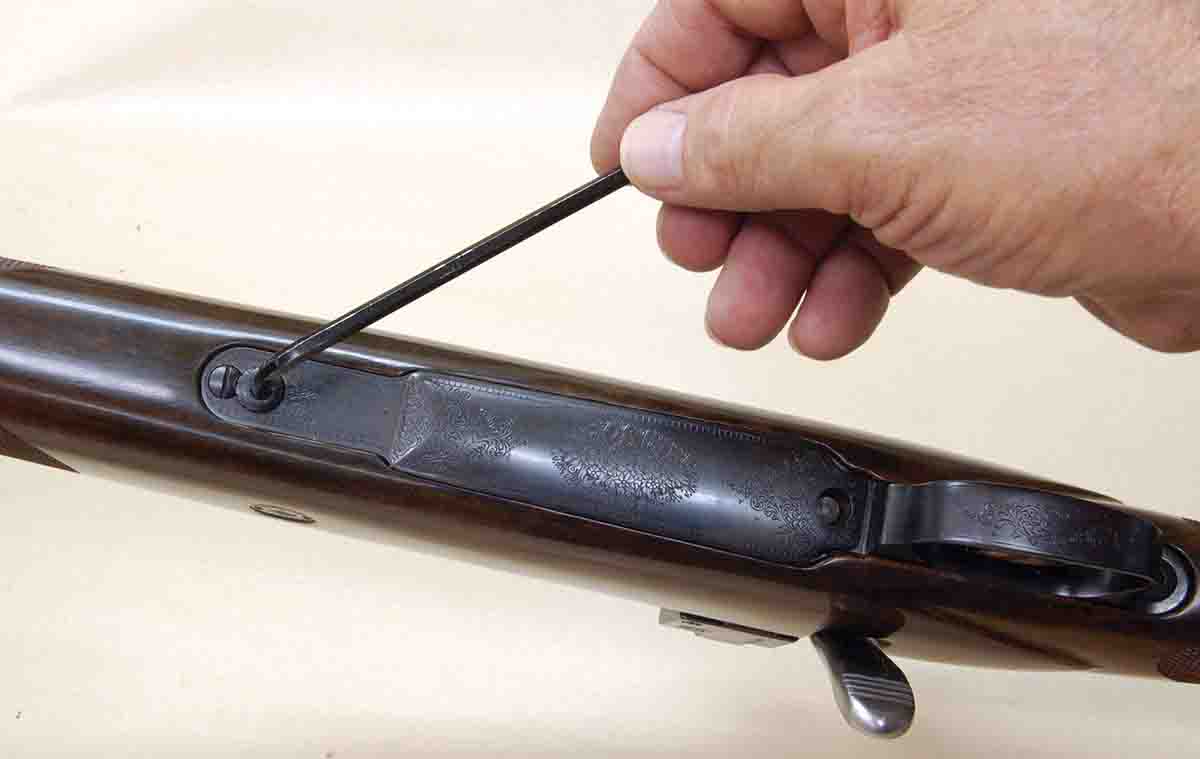
Even heavily used rifles that do not get carried far from home benefit from removing the stock at the end of the season to get at debris that somehow got inside, or to remove a rust spot or two that somehow got started during the season.
Many hunters don’t do this because they lack properly ground screwdrivers to fit heavily torqued, slotted guard screws or the proper equipment (a gun vise) to clamp the rifle upside down for removing the screws. Socket-head guard screws make the job absurdly simple. The rifle can just be laid on a tabletop for disassembly.
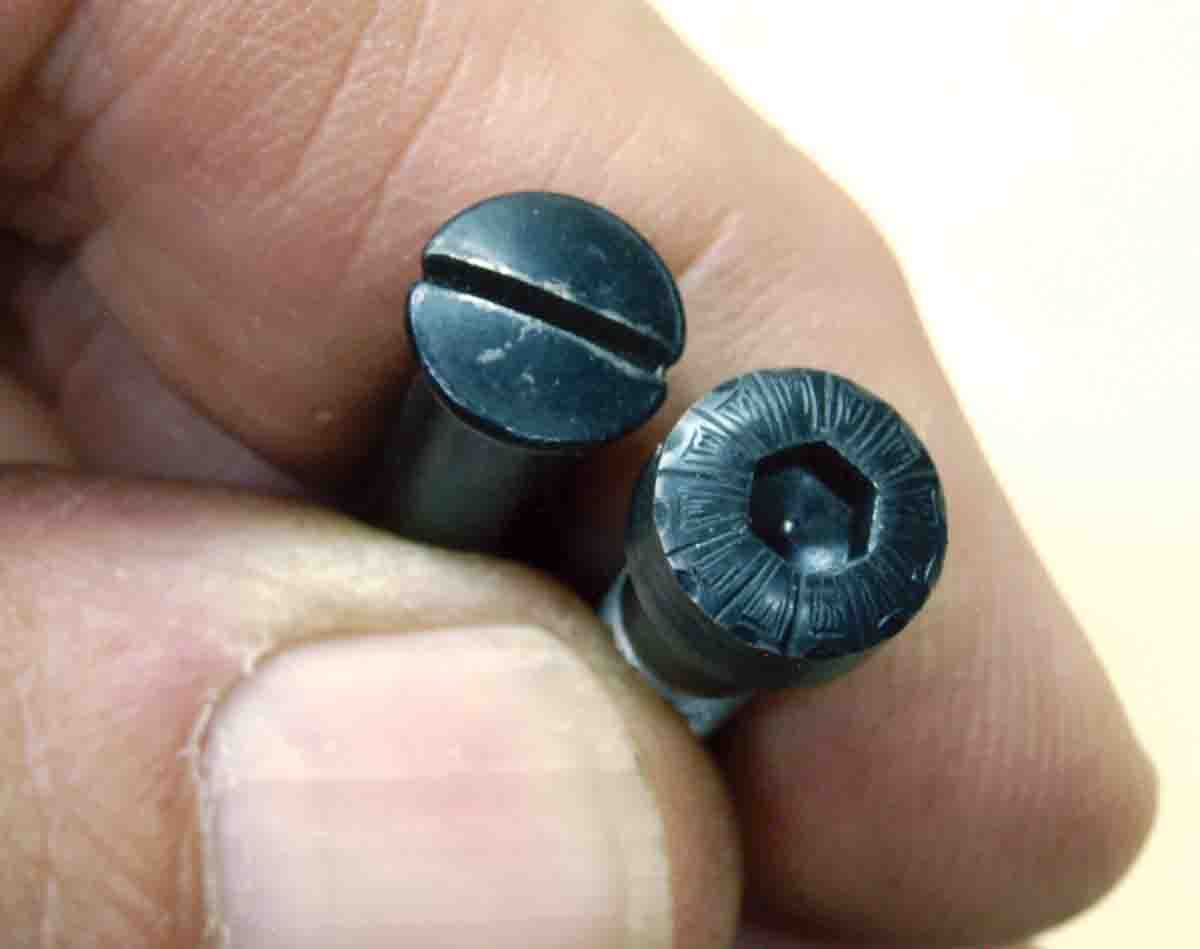
Where can socket-head guard screws be found? Gunsmithing supplier Brownells lists them for Mauser, Winchester M70 and Remington 700 rifles. The company also sells a long-blank, socket-head screw that can be shortened and threaded to fit most any bolt gun. I believe more specialized outfits like B-Square and Forster also sell them, as do many custom gunsmiths. An Internet search will turn up several sources. A friend also told me that he found replacement screws for some of his imported rifles with metric guard screws in the “Metric fastner” section of a local Ace Hardware store!
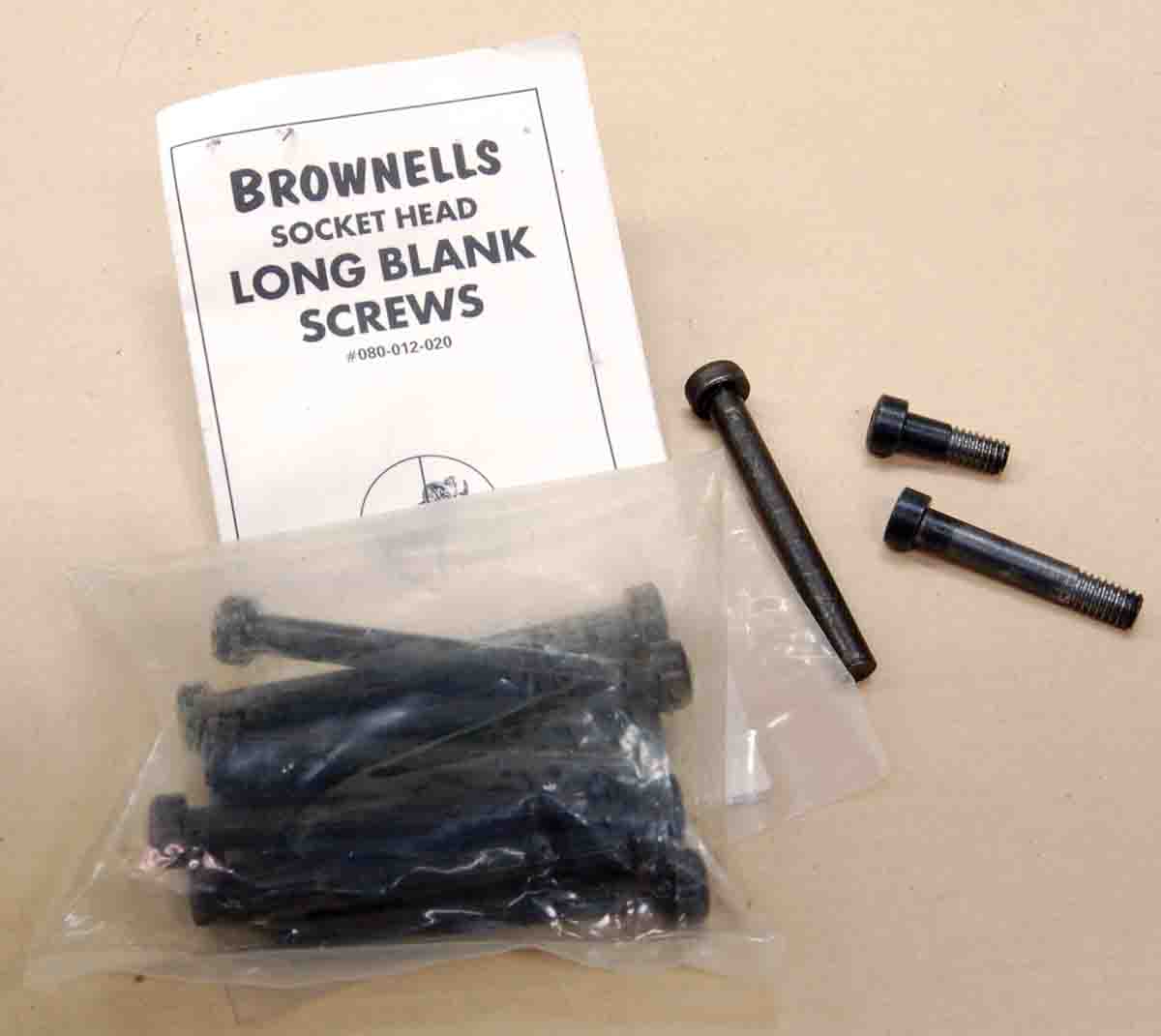
All in all, the lowly guard screw is a part that is never considered until it becomes necessary to disassemble a rifle somewhere other than on a workbench. At that point the importance of the socket-head variety cannot be overstated.


